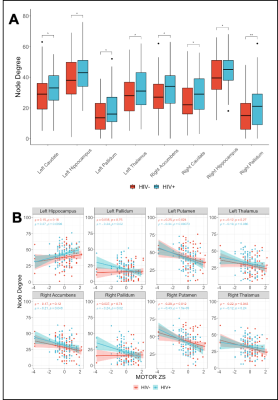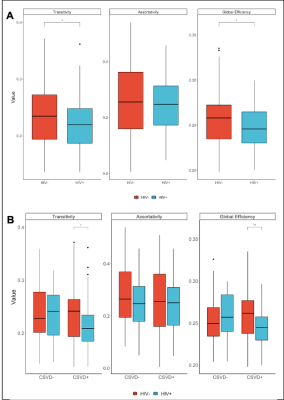Kyle Douglass Murray1, Alan Finkelstein1, Miriam Weber1, Jianhui Zhong1, and Giovanni Schifitto1
1University of Rochester, Rochester, NY, United States
1University of Rochester, Rochester, NY, United States
In this work, we show cognitive and functional changes in the brains of HIV-infected individuals with cerebral small vessel disease using a graph theoretical analysis. Correlations of cognitive scores and imaging metrics imply potential compensatory effects of functional brain networks.

Figure 4. Subcortical associations with Node Degree. A. Boxplots of HIV group differences for each subcortical structure. B. Scatterplots showing Node Degree as a function of Motor Z-score for each region corresponding from A Spearman’s rho is displayed for each cohort. Note that only regions with significant cohort differences are shown. {* p < 0.05; ** p < 0.01}

